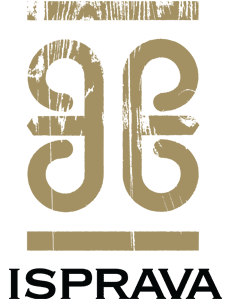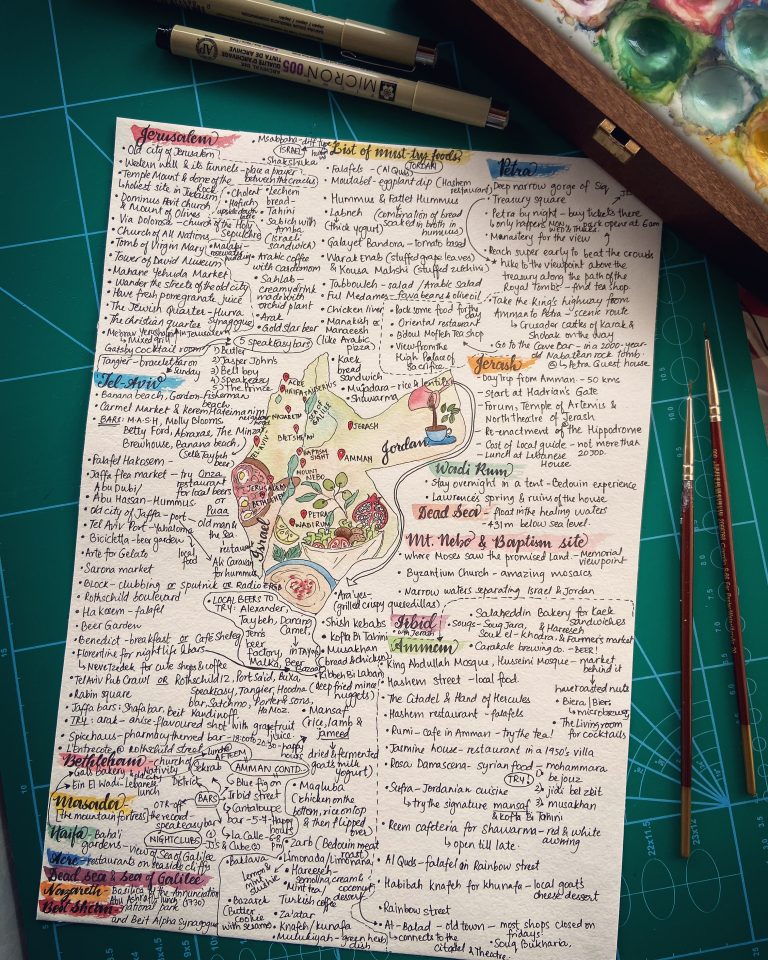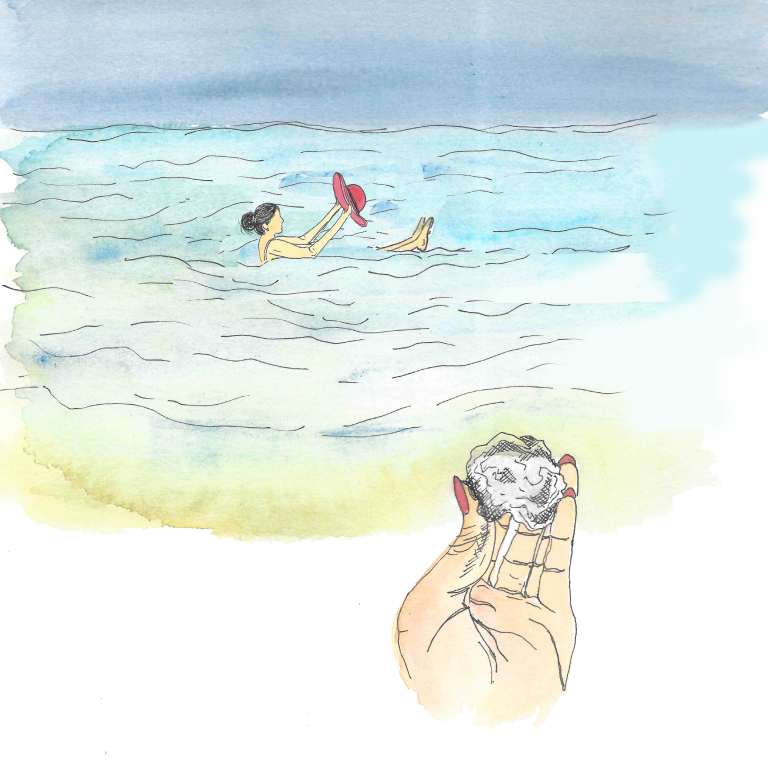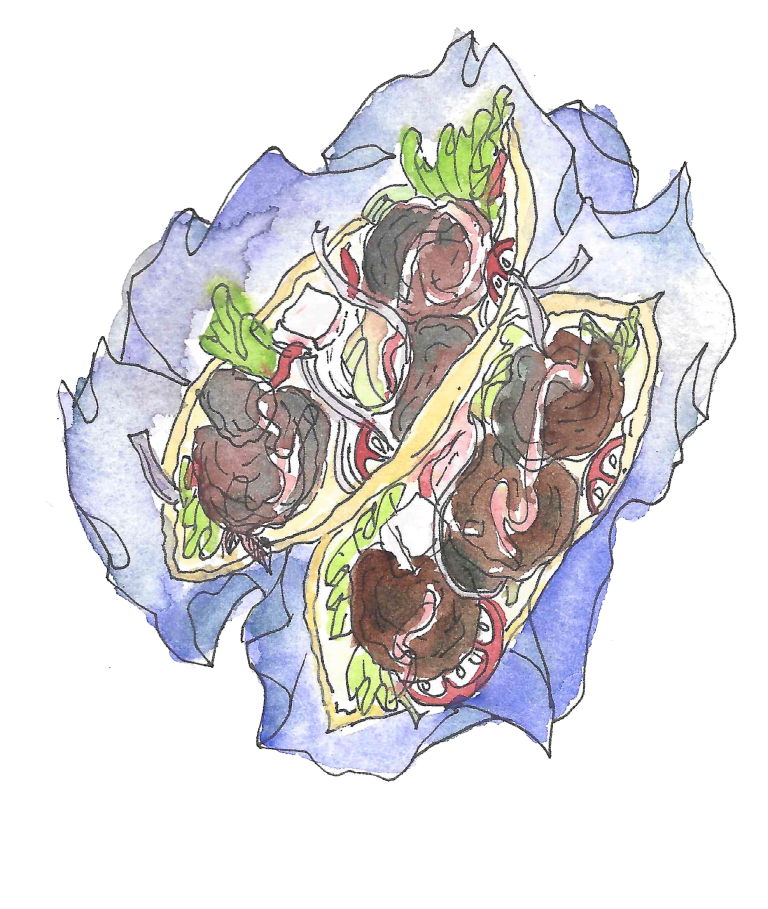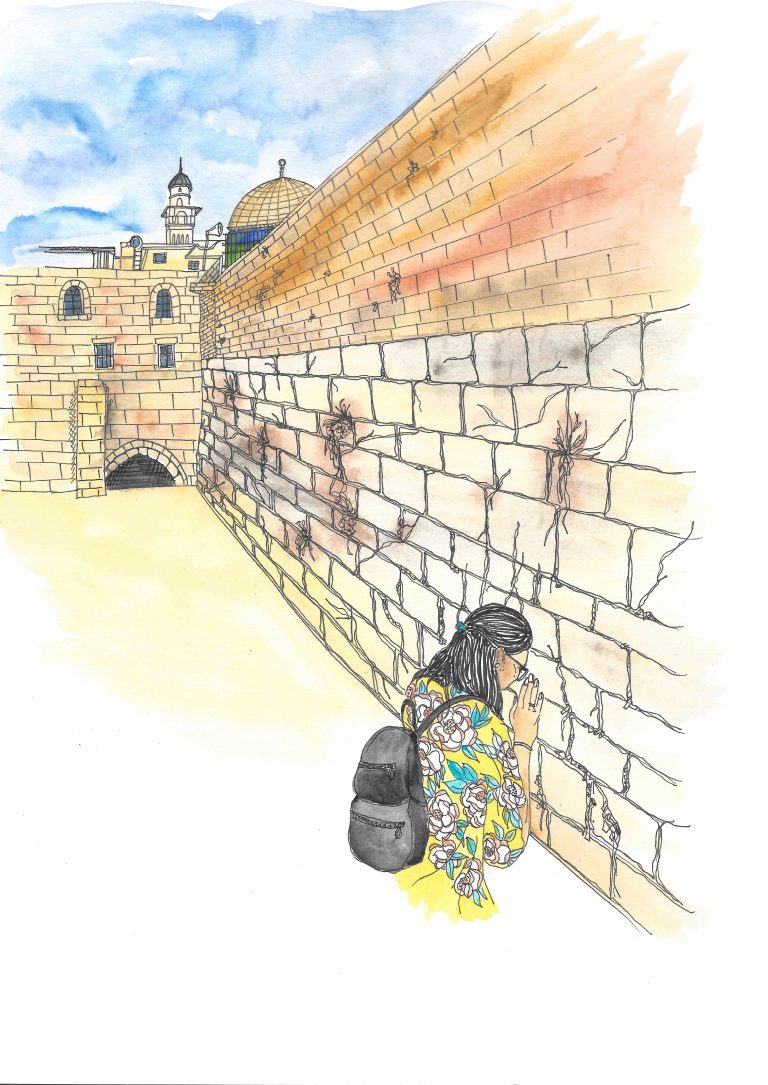First stop…
Yalla Habibi…
“My favourite thing to do when I travel is to soak up everything around me and then pour it all out through my art.”
1.Wadi Rum for a desert camping experience like no other
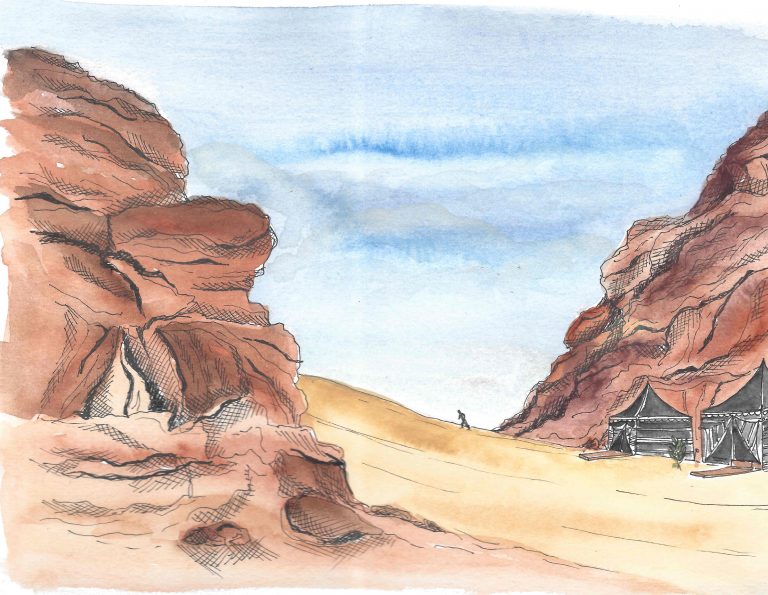
Wadi Rum, located just four hours away from Amman, literally means “Valley of Sand”, and it is here where one can witness great cliffs of red sandstone towering over a terrain of sand and natural rock formations. “It’s also where the 1962 movie, Lawrence of Arabia was filmed, and more recently Matt Damon’s The Martian… those red dunes you see in the movie, they are from Wadi Rum,” Maleka says. She continues, “It is easy to lose all sense of time and place, as you traverse across the relentlessly red wadi, riding on a camel or in the back of a hoodless jeep, encountering a vastness that is all-encompassing. It really is life-altering, especially for an artist like me.” But perhaps the most interesting part of Wadi Rum was the Bedouin experience: which involved staying over night in tents. “The best ones are called the Martian Tents, they are transparent and you can spend all night staring at the carpet of stars in the uninterrupted sky. But if you want a more rugged experience, opt for the Bedouins—these are literally beds in tents in the middle of nowhere.” Maleka advises to book in advance, as the tents usually sell out quickly, and you don’t want to miss this experience.
2.Petra by night
The ancient city of Petra is one of the most celebrated of Jordan’s destinations. Maleka instantly advises, “Do it both by day and by night. Undoubtedly it is like two different destinations between morning and night. So do both.” By night you will see a narrow walkway that runs in between a massive wadi with imposing rock formations on either side. The walkway, as she describes, was lit with paper lanterns all along the way. “It was so surreal, because all you can see are the stars above you, the silhouettes of the wadi rocks around you, the illuminated walkway leading you forward, and nothing else.” When Maleka arrives at the end of the walkway, and Petra’s main site reveals itself through a slit in the earth, she is left awestruck. In front of her stands the all-famous treasury drowned in a red light, lit up by thousands of lanterns. She remembers, “All you want to do is stop and stare. We did a lot of that, just thinking about the sheer imagination it took to build such a masterpiece.” She ended her day at a 2000-year-old Nabataean tomb which has been transformed into a cave bar. Petra is known as the rose red city of the Nabataeans, an ancient Arabian tribe. Maleka also indulged in the local Nabataean cuisine and had Nabataean Sawani which is lamb cooked with Jordan Valley veggies in a clay pot in the oven served with rice.
…and Petra by day
The next day, while the world slept until late, Maleka started her day at 6am to go to Petra. “When you go early in the morning, there are such less people that you get to experience the whole treasury in seclusion and ease. There were literally just 15 of us there as opposed to many hundreds later on in the day. On weekdays almost 4000 people visit Petra.” Another fabulous site in the ancient capital is the Monastery, which Maleka and her husband chose to trek to, climbing 900 odd steps. You can take a donkey, but her husband was adamant they walk. “It was a very tough climb, with irregular steps and a steep terrain. It felt like we were climbing up 100 floors. I even told my husband, if I make it up, you owe me two holidays of my choice after this. But when we reached the top, instantly we knew it was worth it. One of the highlights of this trek besides the stunning monastery itself was on climbing down, being welcomed to fresh pomegranate juice—it simply is the best thing to have after such a strenuous hike.”
3.Local beer is always the best idea…
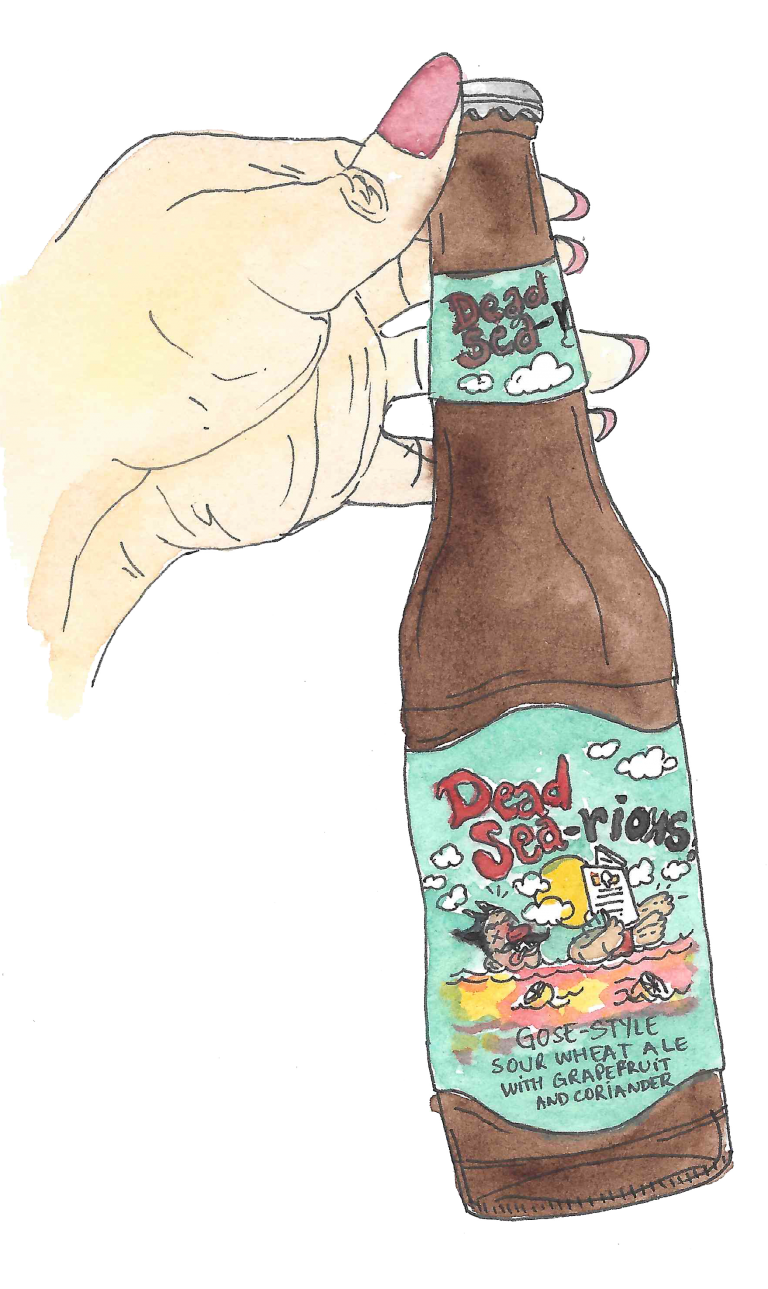
Even though Jordan is only about 90,000 square kilometres in size, it has it all: historical attractions, religious sites, otherworldly landscapes, a cosmopolitan vibe, and even some of the best beers Maleka has ever had. So it’s no surprise then that the first thing she and her husband did when they arrived was have a beer. “We landed in Amman, also known as the “White City” because it is mostly built from limestone, and started the day with a delicious, crisp local Jordanian beer called Carakale,” quips Maleka. Later on along their trip they would visit the Carakale Brewery, situated in the middle of nowhere, with a beautiful mountain backdrop, entirely secluded and serene. Every beer at this brewery featured the most unheard of combinations. For instance, The Fig Deal was a fig and chamomile pilsner while Dead Sea-rious, another brew the couple swore by, featured the most intriguing amalgamation of Dead Sea salts, pink grapefruit and coriander. Red Sea-rious, highlighted pomegranate, a Jordan-famous fruit and red oranges. The couple confess that the beers were amazing, but what really caught The Wander Ink’s eye was the funky art work on the bottles, an instant source of inspiration for Maleka.
4.Ruins and holy sites
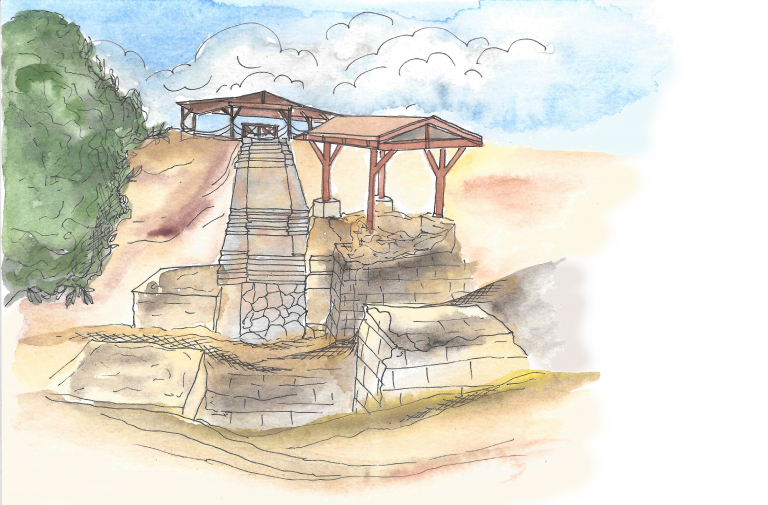
Make day trips to holy sites in Jordan like Jerash, known for its well-preserved Roman ruins. And definitely don’t miss out on Mt Nebo—the summit from where it is believed that Moses saw the Promised Land for the very first time. “When you stand at this memorial view point, on a clear day, you can almost see as far as Jerusalem,” quips Maleka. Then, continue further to the baptism site of Jesus on the Jordan side of the Jordan river, known as Bethany beyond the Jordan. Maleka pipes in,“Quite incredibly, the Jordan river used to flow through this site around 2000 years ago, and when the waters would flow by, it would form a natural cross, between 5 churches. People still come in large groups to get baptised here.” Tourists can access the Jordan river waters from both Israel and Jordan, but the actual baptism site of Jesus is only accessible from Jordan.
5.Food & Drink
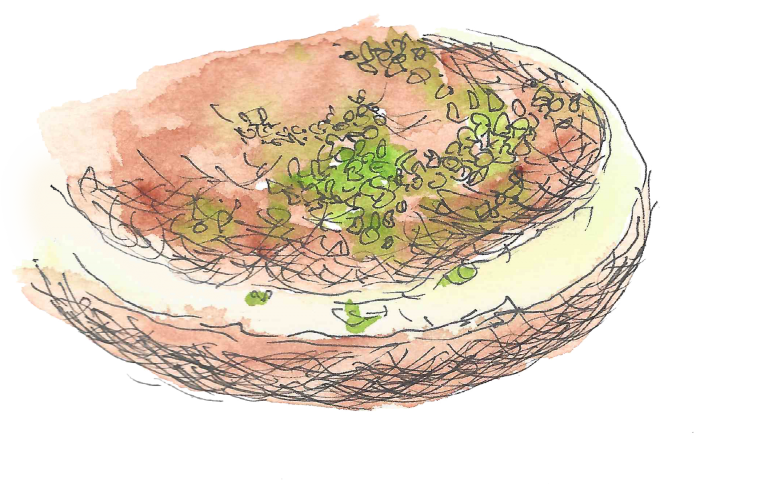
“Jordan was just a dream come true. Every bite of the way,” gushes Maleka. In Amman, she insists you must visit a restaurant called Sufra. It is a quaint little place with cute interiors and beautiful flowers. She ordered the Mansaf here, a primary Jordanian dish which features lamb cooked in a sauce of fermented dried yogurt called Jameed, and is served with rice. As for the best Lebanese food of the trip, for Maleka it was lunch at a place called the Lebanese House in Jerash. She ordered the hummus with meat, a fresh feta salad, parsley hummus and falafel. We are already drooling! She and her husband also enjoyed an evening of bar hopping on Rainbow Street in Amman—a vibrant area dotted by some of the city’s great bars and restaurants. On this street eat the most famous falafel at Al Ouds and go to Cantaloup, a rooftop bar that offers a captivating view of all of Amman, and even the Citadel at a distance.
A page out of Maleka’s travel diary…
Shalom Israel,
you were different. You were amazing.
A 45 minute immigration process per person, a single bridge crossover from Jordan, and we arrived in Israel. Our first stop and main base for the trip was Tel Aviv. We were living in a lovely area called Florentine, complete with hippy bars and cute coffee shops. Mate was a great place where we tried a new beer called Barbar and a local drink called Arak, a star anise flavoured shot which surprisingly tastes good with grape fruit juice. Knafeh Bar, known for its amazing knafeh, a dessert made of local goats cheese was another win. The crepe joint in Florentine called Bretonne was heaven, and next to it, Falafel Ben-Hur had some of the best falafels we had. Apart from Florentine, the night life across Tel Aviv is pretty engulfing. We ended up visiting a lot of watering holes like an underground bar called Sputnik. We even stole an empty beer bottle from here to keep as a souvenir. The Beer Shop was another favourite of ours, with around 30 beers on tap. Others to note include: The Beer Garden, The Brew House. Port sa’id, Buxa, a pharmacy themed bar called Spice Hauz, Porter & Sons, Tangier, Jasper Johns and many more. Eating and drinking are some of our favourite things. But onto Israel’s historical charms…
On the first day of the Israel leg we drove to Jerusalem. We entered through the Jaffa Gate, and made our way to Temple Mount. This holy place seemed to be a confluence of religious faiths. It is the second most religious site for Jewish faith, and it is considered that it is where the world began. It is also the most important site for Muslims, as it is believed to be where Prophet Muhammad began his ascent to heaven. It also holds some importance in the Christian faith. I really admired the gold dome and mosaics, true beauty from another era. Next we entered the Church of the Holy Sepulchre. This is where Jesus is believed to be buried, and they have an entire enclosure inside the church that can be visited by tourists. The mosaics here looked like paintings from afar, but were actually mosaics depicting certain scenes from the bible, and featuring a million elements and pictures. In this church, there is the angel’s stone, which is a fragment of the rock believed to have sealed Jesus’s burial tomb. It is also believed that the oil on the stone keeps surfacing naturally, and has a rose-like smell. We brought back a paper napkin dipped in that oil as a blessing keepsake. Finally we went to the Western Wall, the holiest Jewish place of worship, and the only remains of the second temple of Jerusalem. It is believed that if you leave behind a written prayer in the cracks of the Western Wall, it comes true. You can place anything: your dreams, your sorrows, anything. It is a mechanism of sharing. And I shared too.
The next day we took a day trip to Nazareth to see the Basilica of wAnnunciation. This is where an angel told Virgin Mary that she was pregnant with Jesus. The Basilica has amazing mosaics, but the true beauty of the mosaics lie in that each country has its own representation of Jesus and Virgin Mary. From Mexico to Spain, India to Brazil, Japan, Peru and more… each depict their own unique version. Our long day ended with Nazareth beer, a local wheat beer. This is what bliss is. The day after Jerusalem we went to Haifa, known for the Baha’i Gardens. The gardens are massive and majestic, with a lot of greens and florals. From the top of the gardens you get a view of the Sea of Galilee. In this area, we gorged on the falafels at Falafel Hazkenim. Oh and the most decadent roasted beef sandwich at Abu Shkara only for me. Finally we had dessert at Gal’s bakery.
As for the ultimate highlight of my Israel trip, besides the yummy food and excellent beer, above and beyond the holy sites and architectural structures, was the one in a million experience of floating in the Dead Sea. Accessible both from Israel and Jordan, it is the lowest point on earth, 418 m below sea level. Once you enter, you literally just keep floating. The experience is otherworldly. The water is extremely salty and full of minerals, so if it goes in your eyes, it burns like boiling water. Not such a pleasant experience. Ultimately, the Dead Sea, burning eyes or not, was magnificent.
Until the next wander, here’s signing off, yours truly,
The Wander Ink.
“Every travel experience is enriched with so much learning. It could be a flavour, an architectural marvel, a local belief,
or even a science.”
Maleka Shah Patel has created all the beautiful illustrations in this story. For more information about her and her work, please visit her on Instagram @thewanderink
